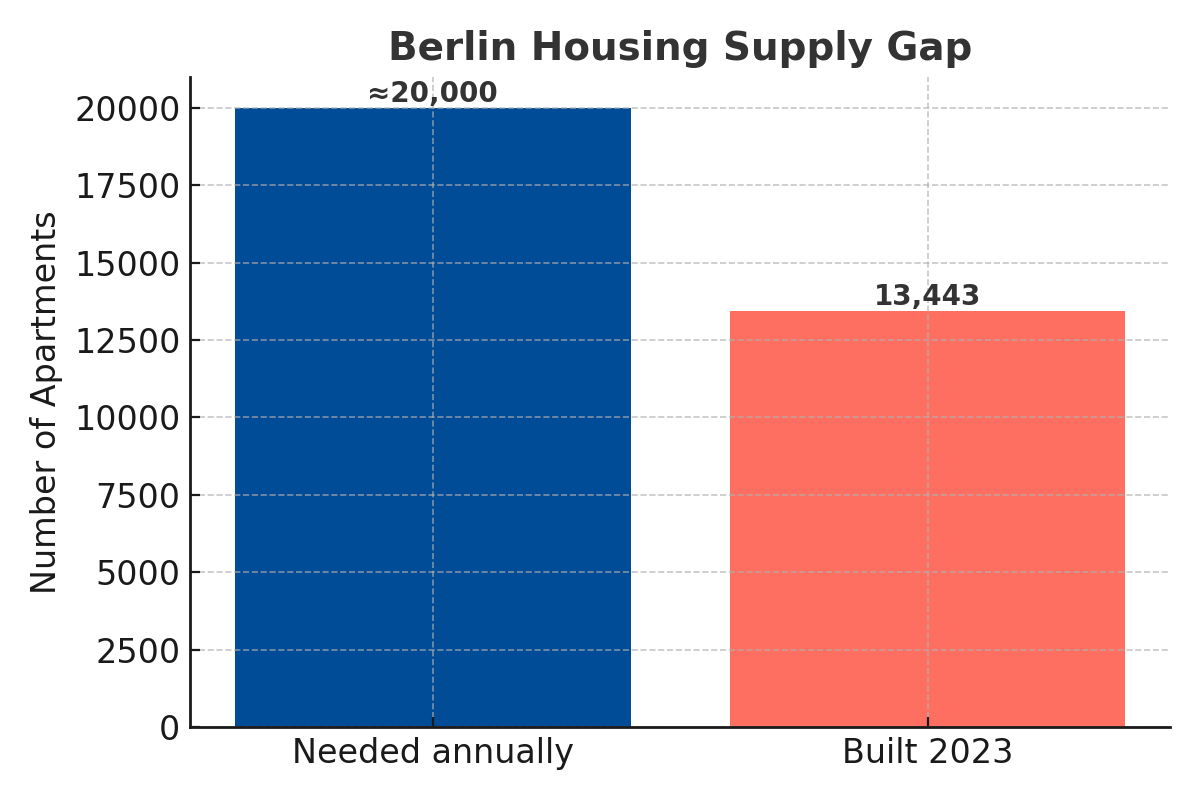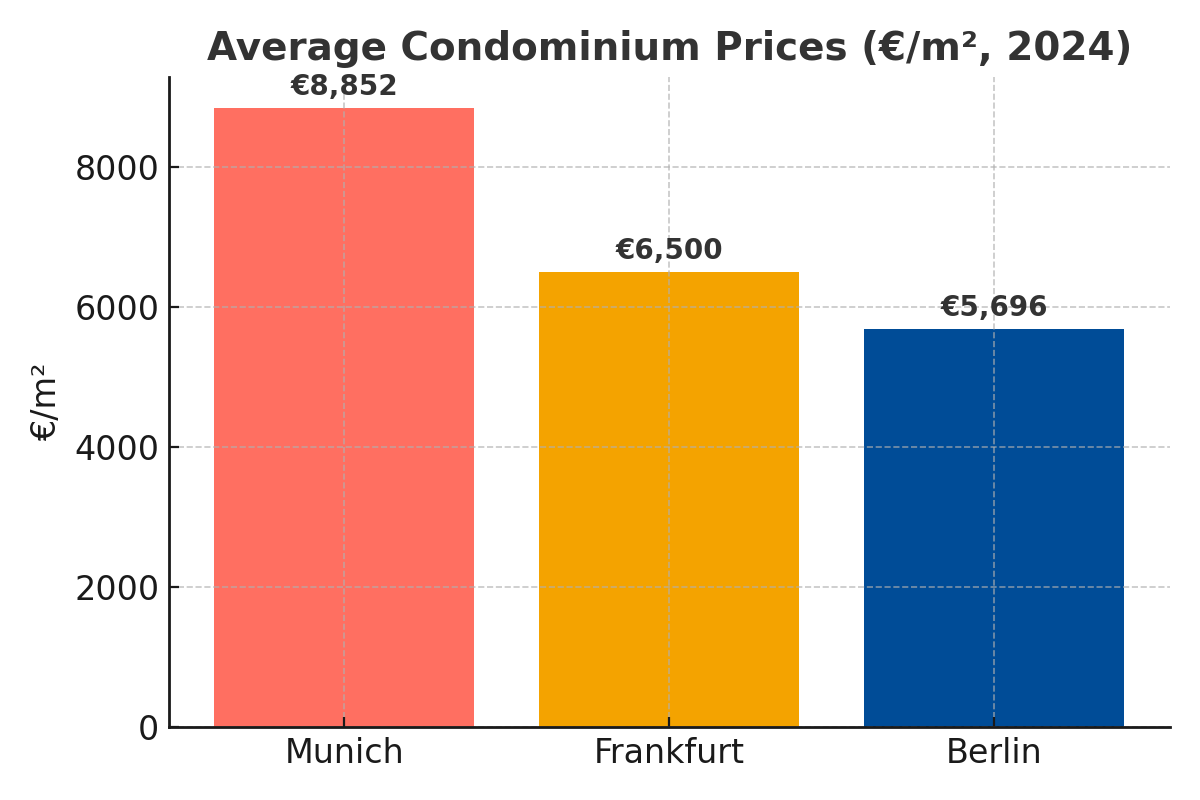Berlin’s Housing Demand: An Unmatched Opportunity for Investors

Berlin has long been one of Europe’s most dynamic capitals, and today it stands at the center of a powerful real estate story. With a population of more than 3.9 million people and rising, the city is experiencing an unprecedented housing squeeze. The vacancy rate is just 0.3%—practically zero—showing how intense the pressure on available homes has become.
A Growing Gap Between Demand and Supply
The numbers tell the story clearly:
- By 2040, Berlin will need 222,000 new apartments.
- In 2023, only 13,443 homes were completed.
That’s less than 40% of the annual requirement needed to close the gap. For residents, this shortage makes moving within the city increasingly difficult. For investors, however, it signals a unique opportunity.

Why This Matters for Investors
Berlin’s housing shortage is more than a social challenge—it’s an investment signal. The imbalance between supply and demand guarantees:
- High rental demand: Properties rarely stay vacant, even in outer districts.
- Low vacancy risk: With such limited supply, tenants compete for available homes.
- Strong long-term appreciation: Demand is growing faster than construction can catch up, driving consistent price pressure.
A Market Still Affordable Compared to Other Capitals
Despite its momentum, Berlin remains comparatively affordable. Average condominium prices in 2024 stood at €5,696 per square meter—far below Munich (€8,852) and Frankfurt (€6,500). This pricing dynamic creates a dual advantage: investors benefit from lower entry costs today, while tapping into a market with high upside potential.

The Immediate Opportunity
Berlin’s unmet demand translates directly into opportunity. Properties are leased almost instantly, and institutional as well as private investors are already moving to capture the upside. With migration continuing to add thousands of new residents each year, the fundamentals of the market remain exceptionally strong.
Conclusion
For investors looking at Europe’s real estate landscape, Berlin represents a rare combination: high demand, limited supply, low vacancy, and attractive entry pricing compared to other capitals. The gap of 222,000 homes by 2040 is not just a statistic—it’s a roadmap for opportunity.
Now is the time to position for long-term growth in one of Europe’s most resilient and exciting real estate markets.
